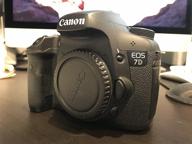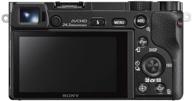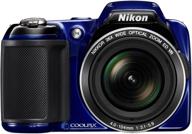
Review on Sony NEX-5N 16.1MP Touchscreen Camera with Interchangeable Lens (Silver) by Stephanie Jonsson

Great camera - make sure you adjust the menu
(Minor updates below added June 2012). I bought the NEX-5N in mid-October 2011, just before traveling to Europe. Bottom line: it takes great photos without a flash, especially in really bad light conditions (like 1000 year old wine cellars). As others have written, the 18-55 zoom camera takes very high quality photos - no loss in quality to take advantage of the small size and light weight compared to a top-end DSLR. Therefore, I think it can be used successfully by both up and down traders. But the camera has quirks, some serious. Many of the other reviews cover the overall goodness of the camera, so I'll focus on a few elements of the review that I feel need strengthening. full possibilities as the camera can take amazing photos after exiting auto mode. Having said that, I have to say that the learning curve is steep, not only because the camera has a lot of features, but also because the user interface is a pain in the ass to get used to. The lack of special controls due to the small size creates great difficulties in everyday use. Here's a specific example to illustrate some of the frustrations that can arise. The camera can take photos with automatic HDR (high dynamic range). The three shots are immediately merged, which are automatically bracketed (using the steps you specify) to create an image that would take minutes to create if you had to merge the three shots yourself using editing software. Great feature, but here are the steps if you haven't set up a menu: 1. Turn off RAW if you've used it, which requires at least 3 menu presses. 2. Press the menu again and select Brightness/Color Control. 3. Scroll and select DRO/Auto HDR. 4. Scroll and select HDR. 5. If desired, press Option and then change the HDR exposure differential for bracketing (from 1EV to 6EV). 6. Click OK twice. In total, you need to perform 6-9 keystrokes to prepare your camera to take an HDR photo. Then, to return to normal shooting, you must go through all the steps again. For this to work, your subject must be no livelier than a sloth. Many of these steps can be avoided by customizing the menu buttons. To do this, you must first understand what the camera is capable of and how you are going to use it, which really requires several days of experimentation. You then have to fiddle with the menu programming for a while until you have the setup the way you want it. Then you'll have to get used to the new customizable menus. In other words, in order to make good use of all the possibilities that the camera has, a significant initial investment is required. Most DSLRs also require a lot of training, so that's no reason for me to avoid the NEX-5N. But you have to be prepared for that. I took photos in low light conditions that I couldn't take with any DSLR I know of, so I ended up being pretty happy with the camera, but had a bit of a struggle before I got there. .Best Features:1. Extremely good native low-light performance, as well as several modes that enhance the basic natural capabilities of the camera and lens, such as B. Handheld Twilight Mode, Anti-Blur Mode, Auto HDR and Dynamic Range Optimization. All four are different. It really helped my photos as I understood how these modes differ and when to use them. My shots might not have been typical - I've spent hours a day in old wine cellars, Gothic cathedrals and the like - but even for low light shots in a restaurant with friends (no flash) the camera was great. .2. Size and weight are unbeatable. I bought a Kata Grip-10 DL photo bag that was supposed to be too small for the camera on paper, but it fit perfectly. I was able to carry the kata bag on my belt with the zip closed, the camera inside, the flash attached, the spare battery, the spare SD card, and the "cloak" that came with the kata bag and that all pretty discreet. The tilt screen makes a big difference. Features still to be solved: 1. The detachable flash was on my list of problems until I used the camera. I've left the flash plugged in constantly for the past two weeks and it's worked fine, although I've almost never used the flash. When I used it, the main subject was overexposed almost every time, so I turned the flash down a bit. Once I have an extra viewfinder, I think I can put the flash away and not miss it too much. 2. Movies. I'm not a big movie fan, so I don't care. I was hoping to get the camera after the "clicking noise" was fixed in production, but no, mine is clicking during video capture. Sony is fooling itself if it genuinely believes that clicks only happen when people move the camera in unnatural ways. It's almost constant. But I'll post it and from what I've read it will be fixed quickly and newer devices probably won't have any issues. So I'm not worried. UPDATE: I originally wrote that I can't get large movies recorded in AVCHD mode to transfer to a computer using Windows 7, and if the SD card with the mix of AVCHD movies and photos is almost full, the photos will not be transferred either. I didn't lose a photo or video but I was concerned. Update - Since my original post, this issue seems to have gone away. There may have been a hardware problem with my built in card reader which was replaced during a computer repair and now the transfer is working fine. Since I haven't seen others report the same issue, I'm assuming the catch was mine.3. The LCD screen is hard to see in bright sunlight at its default ("Auto") setting, BUT there's a setting you can multi-click to select that brightens it up a lot. This setting allows the LCD to be used in bright sunlight, but also degrades the LCD's color reproduction by adding an orange cast and oversaturating other colors. It also seems like the battery is draining when clipping severely. So there are two approaches you can take: turn on the super-brightness setting only at key moments when you need it and then remember to turn it off again, or buy a seemingly wonderful EVF viewfinder (for more than three bills !) The LCD is much smaller overall. Haven't tried the viewfinder yet, but I'd love to. However, this negates much of the NEX-5N's price advantage over a DSLR. Features that are not so good: 1. Focusing can be slow in low light. This is largely due to the lack of phase focusing, which isn't an easy thing to fix on this type of camera. The focus-assist light almost always gets it right, but it can take a second or even two.2. When you set your camera to Auto ISO, you have no control over the maximum ISO the camera will use. It will fluctuate up to ISO 3200. It's great that the camera takes reasonably sharp pictures at ISO 3200, but that's no excuse for missing the opportunity for the photographer to limit the maximum ISO to a much lower value when he or she needs less noise. Many inexpensive cameras also offer this option.3. The menus are complex and unwieldy, requiring many clicks to change settings as previously described. Also, by default, the camera is set to deliver "advice" every time you press the menu button, overlaying your menu selection with a section of information you didn't ask for. This is useful for about three minutes and then becomes a big problem until you figure out how to turn it off. The shutter makes the same sound as a DSLR and cannot be changed, so covert shooting is not possible. Since there is no mirror to clap, I don't know why the shutter is so noisy. I would like Sony to change this if possible. The touchscreen is an unfortunate feature in my opinion. It's too easy to accidentally touch something and unintentionally change the setting. With a small pocket camera, touch screens can be useful. In theory, the touchscreen could be fine on the NEX-5N too, I suppose, but I found it annoying so I disabled touch. You may be smarter than me, so maybe that doesn't bother you. 6. The only thing I missed when disabling the touchscreen was the ability to "focus here". It was good when I wanted to use it, but terrible when I didn't want to use it. Related to this issue: focus tracking. According to Sony, the NEX-5N will track a moving subject as soon as you touch the point on the LCD screen that you want to track. But it doesn't work. It just makes the focus jumpy and unpredictable. Focus doesn't track anything reliably. Sony should have improved on this before launch. The concept is great.6. The video mode button is poorly placed, just a hair's breadth from where your right thumb and sometimes part of your right index finger might rest on the camera. I recorded at least ten unwanted movies every day just by hitting the movie button without meaning to. The biggest problem this created was that nothing happened when I pressed the shutter button to take a photo. It was only now that I realized the camera had been recording my senseless mumbling for the past three minutes. So I lost a few frames because I had to stop the video recording and go back to the photos.7. Minor points: The default DRO and HDR settings are too weak to change anything, so at first glance they look like bad suggestions. But they just need to be adjusted to a stronger setting and they work fine.8. Update: My son has a Canon T3i so we compared the shots from the two cameras, albeit not very thoroughly. The Sony NEX-5N's build quality is better than the T3i's (less plastic), the rotating body feels more solid, and most importantly, Sony's resolution feels better. If you read online lens reviews, you will find that the Sony 18-55 kit lens seems to be of better quality than the kit lenses that come with even the much more expensive DSLRs. Summary: While the list of cons I've listed seems long, I think the NEX-5N's strengths far outweigh its cons. In the world of ILC cameras, the NEX-5N seems to be in a league of its own when it comes to image quality. For the serious amateur or professional photographer, image quality is the beginning and end of everything. The NEX-5N takes photos of exceptionally high quality, especially in low light. The NEX-7 has additional advantages, including even better image quality in good light, but according to other reviews it doesn't quite match the low-light noise of the NEX-5N in low light and costs a lot more. I am satisfied with the NEX-5N.
- . Good thing
- -
New products
Comments (0)
Top products in 📷 Digital Cameras

Discontinued Canon EOS 7D Digital SLR 📷 Camera Body Only with 18 MP CMOS Sensor

88 Review

Revamped Sony Alpha a6000 Mirrorless Digital Camera: 24.3MP SLR Camera with 3.0-Inch LCD and Power Zoom Lens

103 Review

Nikon D3100 DSLR Camera with Auto Focus-S Nikkor Zoom Lens (Discontinued by Manufacturer)

109 Review

Nikon COOLPIX L810 Digital Camera: 16.1MP, 26x Zoom, NIKKOR ED Glass Lens, 3-inch LCD (Blue)

95 Review





